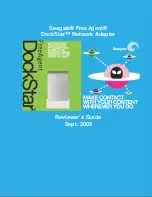
127
WEB BROWSER-BASED CONFIGURATION
•
Initialization Mode
Press Enter key to define fast initialization or Selected the Back
-
ground (Instant Available). When background Initialization, the
initialization proceeds as a background task, the volume set
is fully accessible for system reads and writes. The operating
system can instantly access to the newly created arrays without
requiring a reboot and waiting the initialization complete. when
Fast Initialization, the initialization proceeds must be completed
before the volume set ready for system accesses.
•
Strip Size
This parameter sets the size of the stripe written to each disk in
a RAID 0, 1, 1E, 5 or 6 logical drive. You can set the stripe size
to 4 KB, 8 KB, 16 KB, 32 KB, 64 KB, or 128 KB.
A larger stripe size produces better read performance, espe
-
cially if your computer does mostly sequential reads. However,
if you are sure that your computer does random reads more
often, select a smaller stripe size.
Note: RAID level 3 can’t modify strip size.
•
Cache Mode
The SATA RAID controller supports Write-Through Cache and
Write-Back Cache.
•
SCSI Channel/SCSI ID/SCSI Lun
SCSI Channel: The SATA RAID controller function is simulated
as a SCSI RAID controller. The host bus is represented as a
SCSI channel. Choose the SCSI Channel.
SCSI ID: Each SCSI device attached to the SCSI card, as well
as the card itself, must be assigned a unique SCSI ID number.
A SCSI channel can connect up to 15 devices. The SATA RAID
controller is a large SCSI device. Assign an ID from a list of
SCSI IDs.
SCSI LUN: Each SCSI ID can support up to 8 LUNs. Most SCSI
controllers treat each LUN like a SCSI disk.
•
Tag Queuing
The Enabled option is useful for enhancing overall system
performance under multi-tasking operating systems. The Com
-
mand Tag (Drive Channel) function controls the SCSI com
-
mand tag queuing support for each drive channel. This func
-
Содержание ARC-1110
Страница 9: ...XOR Engine 170...
















































